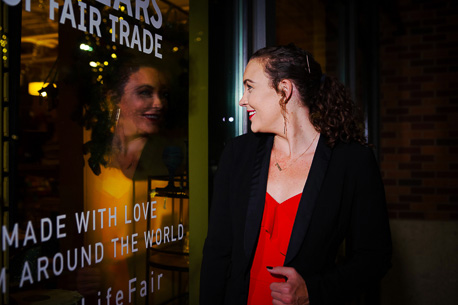
What number of Reviews Should a Photographer Have So Purchasers Have Have confidence in
Deciding on the correct photographer is often a frightening activity, specially given the plethora of alternatives accessible in the majority of parts. 1 important factor that prospective purchasers generally take into account is the number of evaluations a photographer has. Testimonials present social evidence and assistance build trust, providing insights in to the photographer's skill, reliability, and customer service. But the number of critiques ought to a photographer have for customers to really feel confident in their preference?
The necessity of Opinions
Testimonials serve numerous purposes:
Validation: Favourable opinions validate a photographer's statements about their competencies and professionalism.
Perception: They offer serious-earth insights to the photographer’s Operating design and style, dependability, and consumer gratification.
Web optimization: A better number of opinions can boost a photographer’s visibility in search engines like google, rendering it simpler for opportunity clientele to uncover them.
The Ideal Amount of Critiques
When there's no definitive response, several aspects can impact how many evaluations are desired to establish have faith in.
Marketplace Requirements: For photographers, In particular These in aggressive marketplaces, getting at the least twenty-30 evaluations can offer a solid foundation of reliability. This selection guarantees that there is a enough degree of suggestions to mirror reliable performance as opposed to sporadic excellence.
Regularity and Recency: It’s not almost amount but will also about regularity and recency. A photographer with fifty reviews, but only two previously yr, might not inspire as much self-assurance as one particular with thirty opinions, wherever fifteen are with the earlier 6 months. Standard, modern opinions advise ongoing dependability and relevance within their discipline.
Sort of Evaluations: In depth, particular critiques tend to be more important than generic types. Likely clientele search for anecdotes that describe the photographer’s professionalism, creative imagination, and dilemma-solving abilities. Detailed assessments enable paint a clearer image of what customers can hope.
Comparison to Opponents: In extremely aggressive markets like wedding pictures or corporate headshots, acquiring a lot more reviews than opponents may be useful. If most neighborhood photographers have around 30 reviews, aiming for 50 may also help a photographer get noticed.
High-quality vs. Quantity
Though a greater amount of critiques is mostly better, good quality shouldn’t be compromised. A few effectively-penned, comprehensive testimonials is usually a lot more persuasive than a lot of imprecise or lukewarm kinds. Clientele typically try to look for:
Particular Praise: Responses on unique aspects like punctuality, creativeness, overall flexibility, and the ultimate excellent of shots.
Individual Stories: Experiences in which the photographer went previously mentioned and over and above or managed unpredicted worries skillfully.
Comparative Opinions: Feed-back from shoppers which have used other photographers in the past and will Look at their ordeals.
Creating a Sturdy Assessment Base
Encouraging Reviews: Photographers should actively persuade contented purchasers to go away critiques. This may be performed by way of stick to-up emails, thank-you notes, or incentives which include savings on potential solutions.
Providing Exceptional Services: Continually delivering substantial-high-quality support makes certain that customers are content and more prone to depart favourable suggestions.
Participating with Opinions: Responding to reviews, the two beneficial and destructive, exhibits that the photographer values consumer opinions and is particularly dedicated to continuous improvement.
The Effect of Adverse Opinions
A handful of destructive reviews among numerous positives usually are not automatically detrimental. In reality, they could incorporate authenticity. Consumers realize that no support is perfect, and how a photographer addresses negative feedback can reveal their professionalism and perseverance to purchaser pleasure.
Situation Study: Richard’s Images
Just take, by way of example, Richard’s Photography in San Antonio, Texas. Richard’s Images has recognized by itself as a dependable title via an important amount of optimistic reviews on platforms like Yelp and Google. They may have in excess of 50 opinions, nearly all of that are specific and recent. Shoppers constantly praise Richard and his team for their professionalism, creative imagination, and ability to help make clientele experience cozy, bringing about all-natural and exquisite photos.
Their technique features:
Customized Assistance: Every customer gets individual focus, making sure their specific wants and Choices are achieved.
Professional Interaction: Richard’s crew maintains a significant volume of professionalism in the Preliminary consultation by way of to the ultimate supply of shots.
High quality Final results: The good quality of the ultimate illustrations or photos speaks for alone, encouraging contented clients to depart positive feedback.
By maintaining a steady stream of positive reviews, Richard’s Photography don't just builds trust but will also appeals to new purchasers that are assured in the quality of service they will acquire.
Summary
In summary, although there's no magic quantity of reviews that assures consumer believe in, here aiming for a minimum of twenty-30 perfectly-published, latest, and comprehensive assessments is a great benchmark for photographers. This, combined with a determination to outstanding service and proactive engagement with purchasers, will help build a robust track record and instill assurance in prospective clients. Good quality, regularity, and recency are crucial features that, when combined with a enough quantity of testimonials, make a compelling scenario for trust and dependability from the competitive discipline of images.